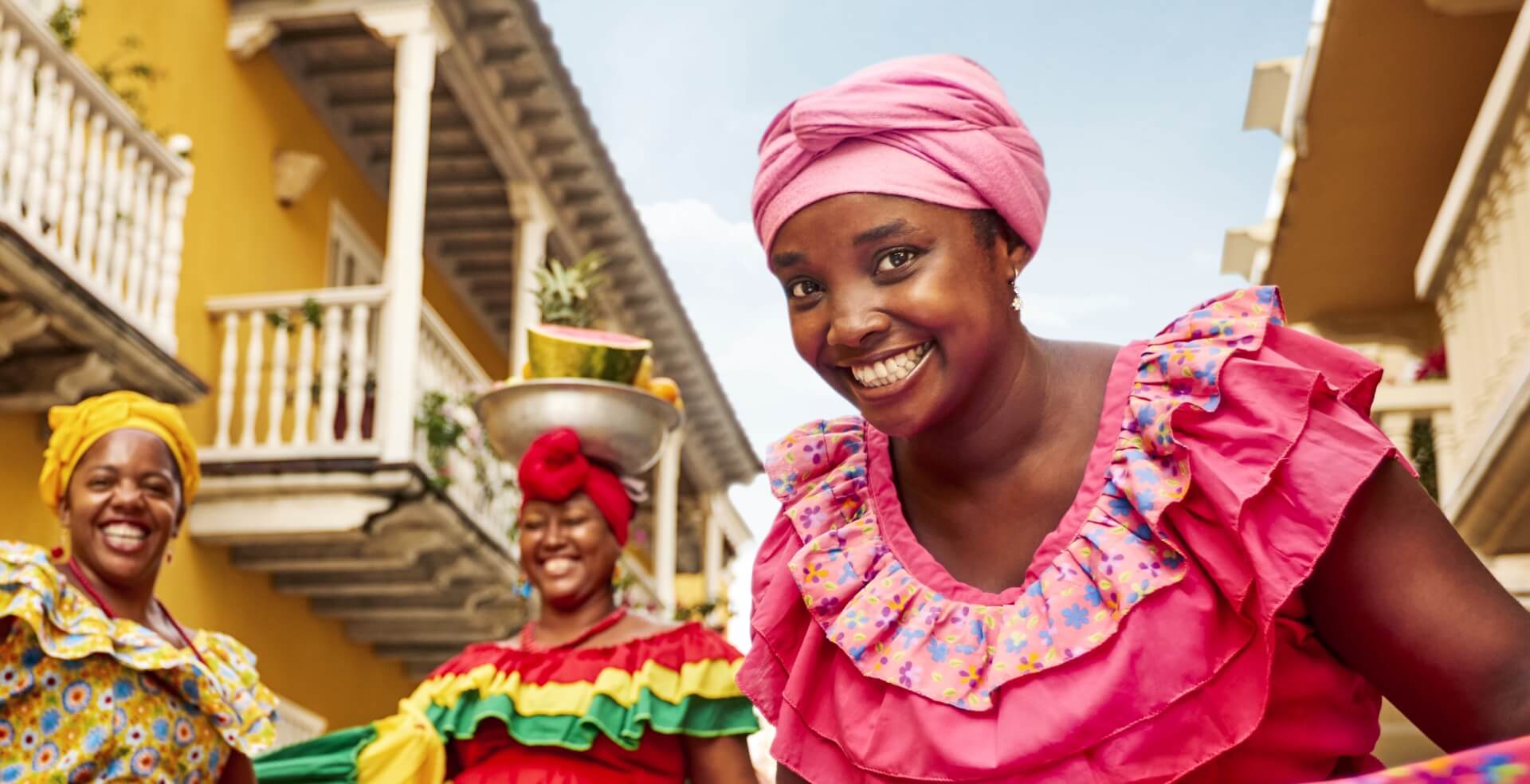Morroa, also called “the cultural loom of the savannas of eastern Colombia”, is a colorful village where threads are fused by the hard work of the many inhabitants who are devoted to the noble craft of weaving hammocks, those famous nets in which humans wrap themselves up during their times of relaxation and daydreaming. A good number of these typical Colombian hanging beds is produced here, as well as a substantial part of the country’s music. Lots of music is heard in Morroa.
It is easy to reach this village, located only 15 km to the northeast of the city of Sincelejo, the capital of the department of Sucre, on the Troncal de Occidente, or Western Trunk Road. Also very nearby, less than 2 km away, lies Corozal, the second municipality in the region. This means that all these locations blend and seem to be only one, especially in these festive times where the legacy of past generations blossoms.
Pito Atravesao Festival in Morroa
Exactly from June 19 to 21, Morroa will celebrate the 21st edition of the Festival Nacional del Pito Atravesao. More than a feast, it is the convergence of a series of elements, expressions, tasks, and circumstances that give shape to a very representative cultural melting pot of this diverse country. This is a propitious occasion for the world to know the reasons for the pito atravesao (transverse pipe) and the picturesque hammocks that characterize Morroa and the vast zone embedded in the hills known as “Montes de María".
The pito atravesao, or flauta de millo, a musical wind instrument made from the tube of the millet cane, has a tab crossed by threads that vibrate with the passage of air. Additionally, body of the flute has four openings that represent musical notes. This wind instrument, an indigenous contribution to many Caribbean rhythms, is the main instrument of the cumbia, a dance that is a Colombian symbol..
The background of the Festival Nacional del Pito Atravesao, whose first edition took place in 1988, goes back to the pascuas floridas, dances that were held at the village corners and lasted until dawn. These feasts took place in December, coinciding with Christmas and the blooming of the matarratón, the Caribbean´s characteristic tree. The abundance of flowers is considered the best omen for ending the old year and beginning a new one in prosperity.
Initially, the festival was conceived as a complement to the San Blas Feasts of January. However, opposing voices fostered the idea of an independent event that would highlight the vernacular music of pipes and drums and simultaneously be a genuine reflection of the oral tradition thanks to which the new generations had come to know a treasury of music and dance.
People of all ages bring together this folkloric versatility and recreate what once meant the settlement in the region of ancestral communities like the Zenú Indians and their influence on present music and artisan expressions in the department of Sucre. Following two decades of existence, the Festival Nacional de Pito Atravesao has consolidated as a window for showing the bravery and festiveness of the department.
Aside from the parades and costumes that deck the streets of Morroa with their color and ingenuity, the festival rewards music and dance participants in several categories. There are awards for the best cumbia dancing couples, who arrive not only from Sucre, but from the departments of Atlántico, Magdalena, Córdoba, and Santander as well.
And naturally, the best pito atravesao groups receive honors in the children’s, traditional, and projection categories. The celebrations have deep roots and a cultural connotation that attracts many travelers, and although there are only a few houses in Morroa that may be used as lodging, the nearby towns of Corozal and Sincelejo can accommodate the many people who come to the festival.
In Morroa, hammocks sway
Also in Morroa, and simultaneously with the groove of the music in the wind, hammocks swing the air that flows through the flauta de millo or as the inhabitants of these Caribbean lands say, “flauta e’ millo”. These weavings are part of the oral tradition that gradually gave shape to these peoples where blood was exclusively Indian until the racial and cultural mixing with Blacks and Spaniards began in the 16th century.
And it may be said that the routine of the men and women weavers of Morroa on these vertical looms and with many threads of cotton dates back to that time. Nowadays, they all perform their craft in similar fashion due to the high demand for hammocks and the fact that the prestige of Morroa production must be supported on increasingly creative woven nets. Naturally, there are other towns and villages that contribute to the tradition. Examples are Don Alonso in Corozal, Chochó in Sincelejo, and San Jacinto, in the department of Bolívar.
The signs that indicate the imminent arrival to Morroa are the monuments of La Devanadora (the spinner) and El Pitero (the pipe player), both by Master Plinio Lambraño. When the festive notes of the cumbia coming from the pito atravesao are heard and the many colors of hammocks suspended in the air or hanging from trees or posts are noticed, it is time for these people, who weave and set their history to music, to freely enjoy themselves either during the Feasts of San Blas, the patron saint, or more recently, during the Festival Nacional de Pito Atravesao.
How to arrive and where to stay in Morroa
There are daily flights between Bogotá and Corozal, the latter distant 2 km from Morroa. By land, it is necessary to take the Troncal de Occidente road from Bogotá to Medellín. The approximate distance is 1,000 km.
Several homes in the municipality of Morroa have been outfitted as lodgings, but thanks to the proximity of Sincelejo and Corozal, it is easy to stay in a hotel in either one. Crossing the savannas of Sucre is quite a pleasure.


















